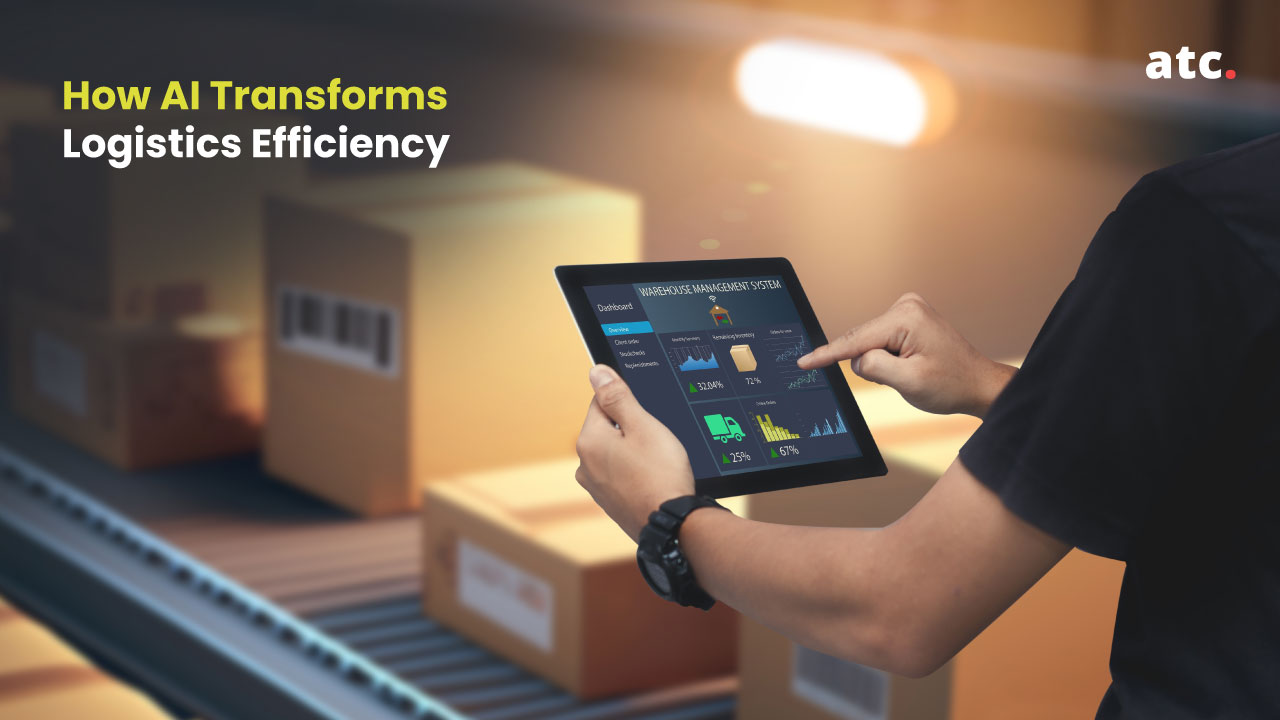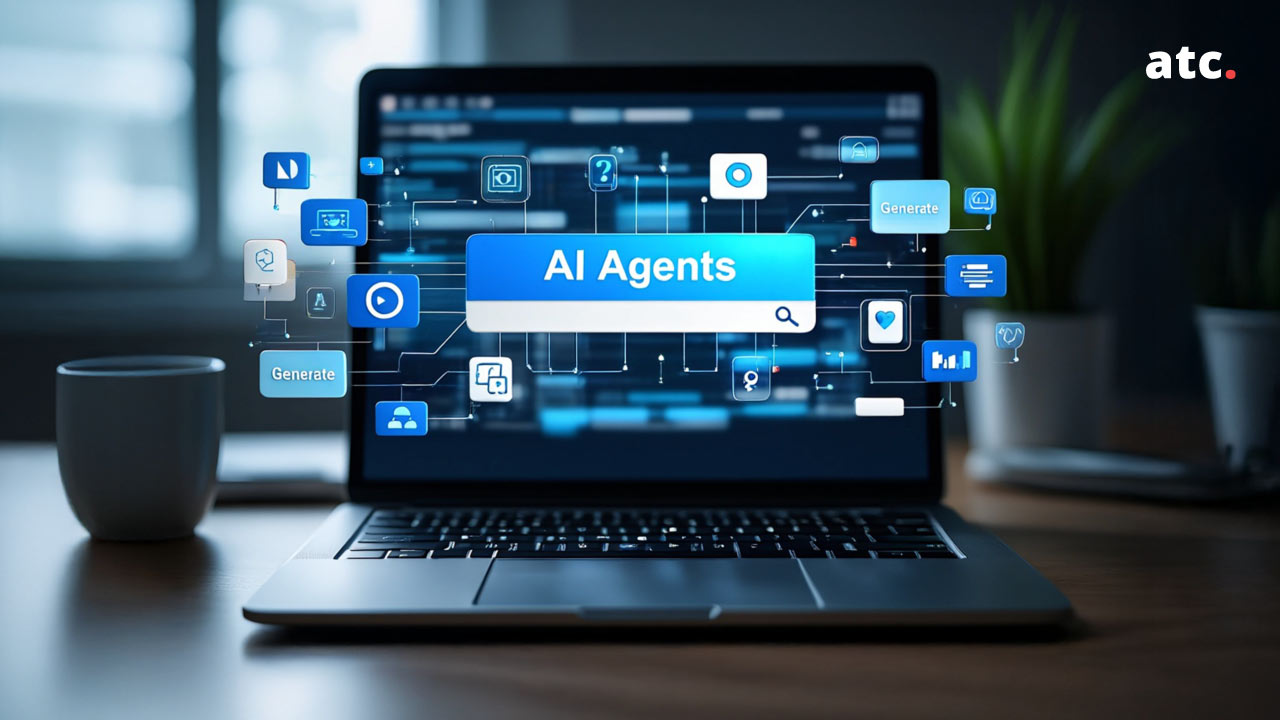Subscribe to the blog
Predictive demand forecasting uses data‑driven rules to predict future demand from customers, enabling supply‑chain and logistics companies to make plans with precision rather than relying on historical sales alone. In today's hyper‑competitive, digitally empowered marketplace, small forecast errors can snowball into stock outs, overstock, and lost sales. With the global predictive AI market projected to reach $22.22 billion by 2025, at a 21.9% CAGR for 2024–2033, businesses are making big bets on AI‑driven forecasting to drive ahead of volatility and complexity.
As e-commerce grows increasingly—the last-mile delivery is already 41% of overall logistics expense—the need for actual, in-the-moment demand intelligence has never been more acute. Predictive demand forecasting is increasingly a core component of operational effectiveness, enabling businesses to maximize inventory, reduce waste, and dynamically manage fleets.
The AI Advantage:
During a period of rapid market fluctuations and growing customer demands, artificial intelligence (AI) brings in game-changing capability in demand forecasting that is beyond the confines of conventional methods. By being able to draw insights from diverse sources of information, sophisticated algorithms, and continuous learning algorithms, AI systems forecast demand not just with greater accuracy but also with greater resilience to disruptions and seasonality.
1. AI/ML Methods for Demand Forecasting
- Time-Series and Tree-Based Models:
ARIMA/SARIMA remains a good benchmark for identifying linear trends and seasonality. They are not as good at sophisticated, non-linear relationships between exogenous drivers (promotions, macro shocks, weather). Gradient Boosting Machines (XGBoost, LightGBM) take in structured features—holiday calendars, geospatial indicators, price changes—to model non-linear demand drivers. These machine learning algorithms tend to minimize forecast errors by 20–50% compared to basic statistical methods.
- Deep Learning Architectures:
Both Recurrent Neural Networks (RNNs) and their replacement, Long Short‑Term Memory (LSTM), are well adapted to learning sequential patterns in SKU‑level sales. LSTMs address the "vanishing gradient" issue, allowing them to learn long‑range patterns—something germane to products with promotion cycles of several months.
Temporal Convolutional Networks (TCNs) use causal convolutional filters across time steps, enabling parallel training and accelerated inference—perfect for high-frequency, SKU-by-SKU forecasting, where retraining speed is critical.
Transformer‑Based Models, originally introduced in NLP, are now being used for time‑series. Their multi‑head attention has the ability to pick up interactions between far‑away time points (e.g., holiday effect on post‑holiday sales), enhancing accuracy on sporadic-demand items.
- Probabilistic and Hybrid Approaches:
Quantile Regression Forests and Bayesian Neural Networks deliver complete predictive distributions—enabling planners to think about best-case, worst-case, and most-likely demand scenarios.
Hybrid Models combine statistical forecasting for stable, established stock-keeping units (SKUs) with artificial intelligence-driven methods for volatile or new products to achieve stability and responsiveness in one system.
2. Reinforcement Learning for Response Operations:
While demand forecasting prescribes the "what," Reinforcement Learning (RL) takes on the "how"—streamlining response activities in an optimal manner ahead of demand. Dynamic Routing Agents learn policies to route fleets in real time to counteract delivery lateness in conditions of uncertain traffic and weather. RL-based routing in logistics pilots realized 83% consistency of performance in disruptions versus 51–72% for conventional heuristics.
Warehouse Order Batching & Sequencing: Multi-agent RL environments batch and sequence orders programmatically to reduce picker travel distance, saving 10–15% in fulfillment time versus rule-based approaches.
3. Tangible Business Impact:
- Inventory Management: AI-driven forecasting has helped decrease overstock by 15–20%, releasing working capital and reducing holding costs by up to 65% for high-volatility categories.
- Stock-Out Reduction: By real-time optimization of safety-stock buffers according to actual variation in demand, high-visibility retailers have attained a 45% decrease in stock-outs and improved customer satisfaction and revenue retention.
- Cost Savings: Predictive routing and load-balancing algorithms save transportation costs by 5–15%, and optimized fleet utilization saves idling time by as much as 25%.
4. Key Enablers and Considerations:
- Data Integration: AI lives on varied data sets—point-of-sale, ERP transactions, weather feeds, macro-economic data, even social-media sentiment. Full‑featured ETL pipelines and data lakes are cornerstones.
- Compute Infrastructure: Deep learning and RL training can be expensive in terms of GPU/TPU resources. Auto-scalers and hybrid on-prem clusters provide cost-effectiveness and performance.
- Model Governance: Strong validation procedures—back‑testing, cross‑validation on hold‑out data, and regular performance auditing—are necessary to establish trust and regulatory compliance.
- Human‑In‑The‑Loop: As AI does the forecasting, skilled planners must still have control over it—checking outlying forecasts, tweaking for unmodeled promotions, and verifying extreme cases.
Operational Efficiency Benefits:
The application of predictive demand forecasting using AI significantly enhances supply chain and logistics operations. With accurate demand prediction, organizations are able to optimize inventory levels, fleet routing, and reduce wastage, hence saving costs and promoting sustainability.
Inventory Optimization & Stock-Out Reduction:
AI-driven inventory systems take in massive, heterogeneous streams—vendor lead times, promotion calendars, point-of-sale, macro-economic data, and even social-media sentiment in real-time. Sophisticated machine-learning algorithms (e.g., gradient boosting and deep-learning hybrids) crunch these inputs to produce SKU-level forecasts with 99.2% product availability in certain applications, up from ~85% using traditional approaches.
- Dynamic Safety Stock: In contrast to static buffer calculations, AI dynamically optimizes safety-stock levels based on experienced lead-time variability and demand uncertainty. Global Retail Enterprises and other retailers reduced stock-outs by 21% in six months, which translates to fewer lost sales and higher customer satisfaction.
- Automated Replenishment: Real-time forecasts are fed directly into ERP and warehouse-management systems to generate purchase orders or inter-warehouse moves exactly when and where they are required. Target's Inventory Ledger, for instance, employs AI to generate billion-weekly forecasts, doubling the coverage and significantly decreasing missed-sales events.
- Working‑Capital Optimizations: MegaRetail's AI implementation in 500 stores reduced inventory overstock by 68% and freed up $45 million per year of inventory tied‑up and doubled inventory turns from 4.2× to 12.8×—a 420% return on investment in one year.
Dynamic Routing and Fleet Optimization:
Predictive planning allows logistics planners to anticipate fleet capacity and route plans in advance based on projected volumes of orders and geographic hotspots of demand. Here, AI methods encompass reinforcement‑learning agents, genetic algorithms, and constraint‑programming hybrids:
- Real-Time Route Optimization: Artificial intelligence software continuously monitors traffic movement, weather, delivery time slots, and vehicle telematics data to dynamically re-optimize routes. One large consumer goods distributor cut fuel consumption by 12% and driver hours by 15% using AI-powered dynamic routing.
- Fleet Load Balancing: Multi-agent reinforcement-learning systems assign loads to heterogeneous fleets—mix of vans, HGVs, and parcel networks—to achieve maximum utilization without violating service-level agreements. In simulation, RL agents sustained 83% performance stability under peak-demand disruptions, outperforming heuristic approaches up to 32 percentage points.
- Predictive Maintenance Scheduling: By predicting vehicle usage patterns using routed mileage and route severity, AI notifies maintenance teams ahead of time before breakdowns happen—cutting unscheduled downtime by 30% and keeping fleets operationally effective.
Effects of Recycling and Sustainability:
AI forecasting not only enables financial returns but also supports corporate sustainability goals through waste and carbon footprint optimization.
- Perishable‑Goods Waste: In food and pharma industries, AI‑predicted order quantities reduce inventory spoilage. A network of hospitals eliminated $25.7 billion of wasted medical supplies by using AI on critical‑care inventory—enhancing patient outcomes and margin performance.
- Carbon Emissions: Joint savings in inventory location and routing optimization equate to 10–15% transport‑related savings in CO₂. A 20% cut in delivery‑fleet emissions was attained by one international retailer following the implementation of an end‑to‑end AI logistics platform that integrated forecast, inventory, and routing modules.
- Circular Logistics Enablement: AI‑based reverse‑logistics forecasting calculates return volumes and timing, optimizing pick‑up routes and minimizing empty‑backhaul run. This end‑to‑end approach not only reduces landfill contribution but also unlocks value in returned products, maximizing supply‑chain circularity.
Case Studies
Case Study 1: Medical-Device Manufacturer & DHL
A single multinational medical-device manufacturer collaborated with DHL's SOAR analytics platform to roll out AI-based demand forecasting across its Australia and EU distribution centers. Through the incorporation of machine-learning models for best SKUs and networkPlacement simulation, they saw:
- 23% decrease in storage capacity
- 10% increase in precision of predictions
- >€4 million (30%) working‑capital savings
Case Study 2: Retail Customer and Litslink AI Agent
One of the major e-retailers utilized Litslink's generative AI agent for both demand forecasting and inventory planning. On implementation, they saw:
- >90% accuracy in predictions, reducing overstock and stock-out occurrences
- 15% decrease in overall inventory holdings
- 20% reduction in excess safety stock, freeing working capital
- 10% sales increase attributable to improved in-stock quantities
Implementation Best Practices:
- Data Requirements and Quality Management:
Consume varied data: POS, promotions, macro-economic indicators, weather, social-media sentiment.
Adopt stringent cleaning pipelines: Duplicates removal, outlier identification, missing-value imputation.
- Model Validation and Ongoing Learning Pipelines:
Apply back-testing models to test AI forecasts against hold-out periods.
Implement automated retraining: models learn as fresh sales data comes in every hour or every day.
- Cross-Functional Alignment:
Infuse AI champions in the IT, operations, and procurement teams to ensure smooth deployment.
Establish well‑defined SOPs: human‑in‑the‑loop override initiators and escalation procedures.
For executives eager to speed up their AI capabilities, ATC's Generative AI Masterclass is now available for reservation. This 10-session (20-hour) hybrid, hands-on course includes no-code generative tools, voice & vision AI, multi-agent semi-Superintendent Design, and concludes with a capstone deploying an operational AI agent. The graduates receive an AI Generalist Certification, acquiring the building blocks to create scalable AI workflows while being deeply linked to supply-chain use cases.
Challenges and Mitigations:
- Data Privacy & Ethics: Supplier or customer sensitive data requires compliance frameworks (GDPR, CCPA).
- Mitigation: anonymization, federated learning.
- Change Management: Operational staff might not trust "black‑box" predictions.
- Mitigation: implement explainable AI dashboards and cross-training workshops.
- ROI Measurement: It is difficult to measure AI's impact. Mitigation: set baseline KPIs (forecast error rate, churn rates, stock‑out events) and monitor progress after deployment.
Future Outlook:
- Multi-Agent Systems: Interoperable procurement, warehousing, and logistics AI agents will self-organize to maximize end-to-end flows.
- Digital Twins: Virtual, real-time copies of supply-chain networks allow testing of scenarios—disruption stress-testing upfront.
- Edge-AI in Logistics Hubs: Inference on-site in warehouses and ports speeds up decision-making with decreased dependence on cloud-latency.
- Generative Simulation: Synthetic data will be used to populate sparse data situations (new product launch, new markets).
Conclusion and Call to Action:
Predictive demand forecasting through artificial intelligence has grown from a discretionary "nice-to-have" to a strategic imperative. Reducing forecast errors by 50 percent, freeing working capital, and enabling dynamic routing, artificial intelligence enables compelling operational cost savings as well as breakthroughs in sustainability. To create and build these capabilities in-house, rigorous training is essential. Thus, book your spot today in the ATC Generative AI Masterclass and get your teams ready to rethink supply-chain operations with the next generation of artificial intelligence.




